Common Wheel and Tire Terminology
Tires are the most important parts of your vehicle! But, what is a tire?
In short, tires are precisely-engineered pieces of rubber, chemicals, fabric and metal that are designed to provide traction, cushion road shock and carry a specified load under all kinds of conditions.
If you’re like most people, all you really care about is that your tires help get you and your loved ones from A-to-Z and everywhere in between safely and soundly.
To make sure the lingo doesn’t get in the way of your smart motoring, this glossary of common wheel and tire terms will help you understand some of the more technical aspects that surround tires.
G J K N Q X Y ZA
Aspect Ratio
Also called ‘tire profile’ or ‘series’, aspect ratio is the height of a tire – from the bead to the the tread (a.k.a. crown) – in relation to its . Calculated by dividing section height by section width.
An aspect ratio of 50, for example, means that a tire’s section height is half that of its section width. In a tire size description, it would be the ’50’ in P215/50R17. In general, tires with a lower aspect ratio have shorter, stiffer sidewalls that resist cornering forces and improve lateral stability.
Asymmetric
Refers to a tire with a different tread patterns on both halves of the tire.
B
Backspacing
The distance (in inches) from the mounting surface to the back edge (or inside lip) of a wheel. Backspacing is different from, but closely related to wheel offset.
Bead
The innermost edges of a tire where it mounts to the rim of a wheel. The bead is reinforced with concentric steel wires embedded in the rubber that are designed to hold the tire to the wheel and prevent damage during installation and/or removal. Every tire has two beads.
Bead Seat
The edge of a rim that creates a seal between the tire bead and the wheel.
Belted Bias Tires
Tire construction type where a ply cut at an angle is reinforced with that wrap around the circumference of the tire on top of the bias or radial ply.
Belts
Layer(s) of rubber-coated that run circumferentially around a tire beneath its tread. Their purpose is to reinforce the tread and help maintain a tire’s shape under a wide variety of conditions including tire pressure variations, centrifugal forces and cornering and braking g-forces, for example. Belts also improve tread wear and help resist damage from impacts and penetration.
Bias Ply Tire
Tire construction type where the plies are cut at an angle and laid across one another in a criss cross fashion.
Bolt Circle
For standardization purposes, bolt circle is also known as PCD (pattern circle diameter). It refers to the diameter of an imaginary circle that goes through the center of the bolt holes.
A four-bolt wheel with 110mm between opposing bolt holes could be written as 4/110, for example. A wheel can have more than one bolt pattern to accommodate multiple vehicle fitments, however, the bolt pattern must first match the requirements of the hub before it can be installed. In other words, it’s impossible to install a wheel with 5/110 bolt circle when the hub calls for a 4/110 PCD.
C
Camber
The angle of the centerline of a wheel and tire relative to its vertical axis. Measured in degrees.
Carcass (Casing)
Also called the casing, the carcass is the main component of a tire consisting of wire beads and body plies. The tread or sidewalls are not part of the carcass.
Cast
A wheel manufacturing technique that requires molten (liquid) metal be poured into a mold that will yield the final shape of a wheel.
Caster
The angle between the vehicles steering pivot axis and completely vertical.
Centerbore
The size of the machined hole on the back of a wheel that helps center it on the hub of a vehicle. Most wheels have large center bores to accommodate several different vehicle fitments. can be used to improve the fit of mass produced wheels.
Chafer
Abrasion-resistant rubber-coated material that helps protect the beads from rim damage and chafing.
Cold Tire Pressure
The measure of air pressure inside a tire that has not been driven on for three to four hours, or has been driven on for less than one mile (after the first condition has been met).
Compound
Refers to the chemical composition (materials used) of rubber used in the construction of a tire. Rubber, carbon black, plasticizers, curing agents and ozone retardants are the main ingredients in most tires. Different compounds are used to manipulate tire characteristics (i.e. heat resistance, level of traction, tread life, cut resistance, cold resistance, etc.) and influence performance.
Cords
Strands of fabric that form the plies or layers of a tire. Made from steel, fiberglass, rayon, nylon, polyester or other fabrics, cords help determine the strength and load carrying capacity of a tire.
Crown
The outer perimeter or contact surface of a tire.
Curb Guard
An extra-thick band of rubber that helps protect the tire sidewall as well as the wheel face from damage as a result of hitting a curb.
D
DOT
Label on a tire sidewall that certifies it complies with all applicable safety standards established by the Department of Transportation (DOT). An alphanumeric code (or serial number) up to 12 digits long appears next to every DOT label containing such information as when and where it was made, by which manufacturer, what plant, assembly line and its size.
E
Euro-Metric System
Or just plain Metric, this European-developed system for specifying tire sizes uses the basic same formula as the but does not use a “P” in the size.
Euro- and P-metric tires of the same size (P215/50R17 and 215/50R17, for example) are identical in their physical dimensions with slight variances in their load capacity calculations and inflation pressure tables.
F
Footprint
The area of a tire tread that touches the road surface at full load. Commonly referred to as the contact patch.
Forged
A wheel manufacturing technique that uses intense heat and pressure to transform a solid “block” of alloy material into the final shape of a wheel.
H
Hub Centric
Wheel with a centerbore that matches a vehicles hub diameter and provides a snug, centered fit. Adapters can help achieve this. See ‘‘.
Hub Centric Rings (Hub rings)
Hard plastic or aluminum rings that are mounted on a vehicle’s hub before the wheel. Their purpose is to ensure a wheel is perfectly centered on its hub. Without hub rings, a wheel is likely to vibrate even if the wheel and tire assembly has been perfectly balanced.
Hydroplaning
Is what happens when tires lose traction as a result of worn or poorly treaded tires that can no longer effectively evacuate water away from the tread. Water accumulates under the tire footprint and creates a thin layer of water between the tire and road surface. The resulting pressure pushes upward, thus lifting the tire away from the road surface and causing it to lose traction. Vehicle speed, tread pattern and water depth all affect hydroplaning.
I
Inner Liner
A layer of specially-formulated rubber that forms the inside of a tubeless tire. Its purpose is to maintain tire pressure.
L
Load Index
A numbering system that corresponds to the maximum load (in pounds) a tire can support when properly inflated. This number is found on the tire sidewall. Maximum load in pounds and in kilograms is found elsewhere on the sidewall. Truck tires use a different system incorporating letter codes to establish a Ply Rating. See ‘‘.
Load Range
Is the carrying capacity of a given tire at specific air inflation pressures. Refer to chart.
‘Load Range’ is gradually replacing the term ‘Ply Rating’; and, is expressed as Standard Load (SL) and Extra Load (XL) for auto tires; and, Load Range C, D and E for light truck tires.
Tire Load Ranges | Inflation Pressure Assigned For “Maximum Load” Rating | |
P-Metric (passenger cars) | ||
Standard Load | (SL) | 35 psi |
Extra Load | (XL) | 41 psi |
Light Truck | ||
Load Range C | (LRC) | 50 psi |
Load Range D | (LRD) | 65 psi |
Load Range E | (LRE) | 80 psi |
M
M+S
A sidewall marking that indicates a tire is approved by the Rubber Manufacturers Association for ‘Mud & Snow’ use. This marking generally appears on “all-season” tires.
Mixing Tires
Practice of combining different tire sizes and/or tire models in the front and rear of a vehicle.
Mounting
The process of installing a tire(s) onto a wheel(s).
O
Offset
The distance between the plane of the hub-mounting surface of a wheel to the centerline of the wheel and tire assembly. Almost always measured in millimeters, a wheel offset can be positive, zero or negative.
Overinflation
A condition that exists when a tire has more than its recommended air pressure for a given load. This can yield better performance, but may have negative side effects such as a less harsh ride, tire damage and excessive stress on the suspension.
P
P-Metric System
A system for specifying tire sizes using the treadwidth (in millimeters), the aspect ratio, type or tire construction as well as the rim diameter (inches). The sizes are written as such: P215/50R17.
In this example, the first character is a ‘P’ and, thus, means this is a passenger car tire. It also says this is a ‘P-Metric’ tire that’s engineered to standards set by the U. S. Tire and Rim Association (T&RA). If there is no ‘P’ (as in 215/50R17) it means the tire is engineered to European Tire and Rim Technical Organization (ETRTO) standards and is an . Fortunately, T&RA and ETRTO standards have evolved together through the years and are virtually interchangeable.
Plus Sizing
The practice of altering the wheel diameter in conjunction with tire aspect ratio to improve both the look and performance of a vehicle without changing the stock tire footprint. Theoretically, plus sizing should not change the overall tire diameter of the original equipment tires too drastically, which is important since larger variances can cause problems with transmission shift points and other important systems.
Ply
Layers of heat- and impact-resistant cord fabric that gives a tire its strength and rigidity. Running from bead to bead, plies are usually made of nylon or polyester and sandwiched between the tread and to form the body of a tire.
Profile
See ‘‘.
PSI
A common unit of measurement for tire pressure. Short for pounds-per-square-inch, it’s a measure of the force exerted by the air inside a tire.
R
Radial Tire
Tire construction type where the plies run perpendicular across the tire from bead to bead (90 degrees to the direction of travel). Similar to ‘Belted Bias Tires’, the plies are reinforced with belts that wrap around the circumference of the tire on top of the radial ply.
Retreading
Refers to the practice of applying new tread to a used tire casing. Most commonly used on medium and heavy commercial trucks.
Ribs
Straight rubber sections of the tread that encircles a tire in its direction of travel.
Rim Width
The distance between the inner and outer flanges of a wheel.
S
Section Width
Distance between the inner and outer sidewalls at their widest point of an inflated tire not under load.
Series
See ‘‘.
Service Description
Marking that identifies a tires load index and speed rating. Located on a tire sidewall after its size listing.
Shoulder
The rounded outer portion of the tread where it meets sidewall.
Sidewall
The side portion of the tire between the shoulder and beads. Every tire has two sidewalls.
Sipes
Small slits cut into tread blocks that help evacuate water away from the crown of the tire for improved wet traction. Sipes also provide “biting edges” for improved traction on ice- and snow-covered roads.
Speed Rating
A letter-rating system for passenger cars only that corresponds to a fixed maximum speed capability for any given tire. Each and every tires capabilities are tested at preset speeds. The results of these tests determine its speed rating. Refer to the chart. (Note: Light truck tires (LT) are not speed rated. )
Rating | Maximum Speed (mph) |
Q | 99 |
S | 112 |
T | 118 |
U | 124 |
H | 130 |
V | 149 |
W | 168 |
Y | 189 |
Z | Above 149 |
T
Tire Placard
More appropriately called a vehicle information placard, this small sticker (often found on the inside of driver side door) contains key information about a vehicle, including the stock tire size, recommended tire pressures, weights and more.
Tire Pressure
The air pressure inside a tire. Expressed as pounds per square inch (psi) or kiloPascals (kPa).
Tire Deflection
Situation where the tread and sidewalls flex at the point where the tread comes in contact with the road.
Tire Rotation
Process of moving wheels and tires from one position on a vehicle to another in order to promote even tire wear and prolong treadlife.
Toe
The difference between the front and rear edges of tires mounted on an axle. Toe-in means the front of the tires are closer together than the rear edges and tires point inward. Toe-out means the front of the tires are farther apart than the rear edges and the tires point outward.
Tread
Made from tough rubber for high traction and low wear, tread is the part of a tire designed to make contact with the road surface. Tread designs can vary greatly depending on the specific purpose of the tire.
Tread Blocks
Individual sections of the tread separated by lateral grooves.
Tread Depth
Distance from the bottom of the tread grooves in a tire to the crown along the centerline of a tire. Measured in thirty-secondths (1/32) of an inch.
Tread Design
The pattern or layout of grooves, blocks, sipes and other tread elements.
Tread Grooves
The space or void between two tread ribs.
Tread Pattern
The arrangement of grooves, blocks, sipes and channels on the tread that permit water to drain away from the footprint.
Tire Rollover
A condition where a tire sidewall rubs the road surface during hard cornering.
Tread Shaving
Most common in racing applications, this is when parts of the tread are physically removed (by cutting, shaving or otherwise) for optimal performance and durability in specific situations.
Tread Wear
Similar to tread life, this is a measure of how long a tire should last in miles or kilometers.
Tread Wear Indicators
Also called wear bars, these narrow rubber bars are built into the tread grooves and clearly show when a tire tread has past its legal expiry point. Wear bars only become visible after tread depth has worn down to 2/32-inch; at which point the tire must be replaced.
Treadwidth
The width of a tire tread measured in millimeters. Given P215/50R17, the treadwidth is 215mm.
U
Underinflation
A condition that exists when a tire has less than its recommended air pressure for a given load. Underinflation can cause tire rollover and deflection.
UTQG
Acronym for the Uniform Tire Quality Grading rating system developed by the American Department of Transportation. UTQG ratings for treadwear, traction and temperature to assist consumers in comparing the relative performance of any given passenger tire at a glance. (Note: does not apply to winter tires.)
V
Valve Stem
A self-contained valve or filler neck that opens to allow gas into an enclosed chamber and then automatically closed and sealed by the pressure in the chamber, a spring, or both.
W
Wheel Alignment
Refers to the proper angle settings of suspension components as they relate to the angles of the wheels so they are perpendicular to the ground and parallel to each other so as to help prolong tire life and provide dead straight tracking on straight and level roads. Related terms include camber, caster and toe.
Wheel Balancing
Refers to the balancing of a wheel on vertical axis by using lead weights to compensate for uneven weight distribution on a wheel and tire. Out-of-balance wheels can cause a vehicle to vibrate at certain speeds and produce uneven tire wear.
Wheel Center
The physical center of a wheel in relation to its width (on a vertical axis).
Wheel Diameter
The physical diameter of a wheel expressed in inches. Whole increments (i.e. 16, 17 or 18) are the most common, however, a few manufacturers offer wheels with diameters of 17.5 inches, though this is rare.
Wheel Weights
These are weights (usually lead) added to a wheel to properly balance a tire and wheel assembly. The weights can be installed on the inside or outside of a wheel and can be clipped, taped or self-adhered to a wheel.
Wheel Width
The physical width of a wheel measured inside the outer lip of the wheel, usually in 1/2 increments (i.e. 7.5 or 8.5).
G J K N Q X Y ZMore by Shaun Keenan



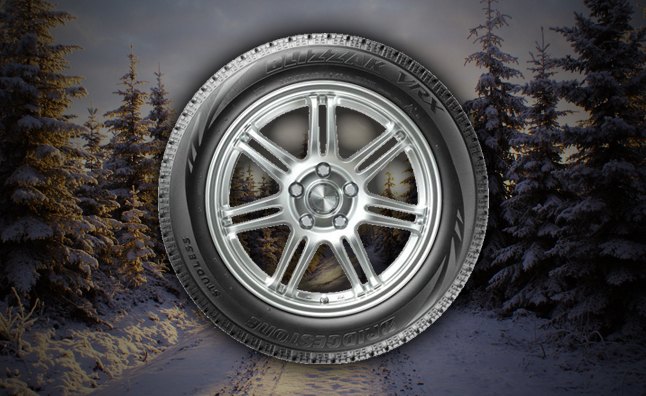















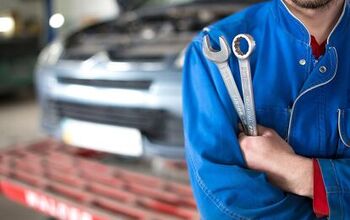


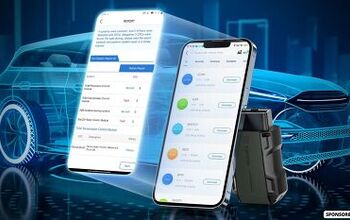
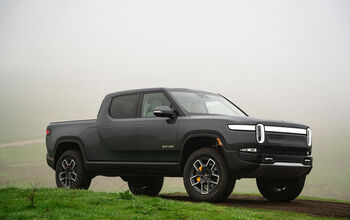

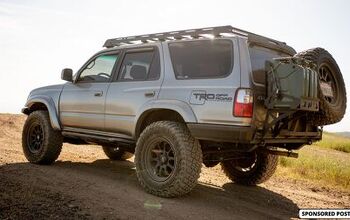






Comments
Join the conversation
Good stuff, thank you. What I need is a precise definition of "rim". You define wheel and tire well, but leave me guessing regarding rim. I'm writing a technical that involves being very precise about that. Thanks so much, Harry Lewellyn